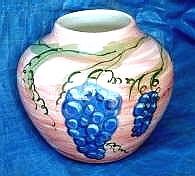Clay is not like sand or soil in that sand or soil consists of granules. Clay consists of platelets.
Much like this

When the clay is very very wet, the platelets are separated like in this first drawing.
As the clay dries, water is holding the platelets apart, less and less and the platelets began to come together like in this second drawing.
The closer to dry, the clay gets, the more it looks like this

The platelets are floating apart when there is a lot of water, as in when the clay is wet enough (soft enough) to be formed. As it dries, the platelets float closer and closer together. When completely dry, the platelets are attached to each other.
Ideally, the platelets are coming together with no air pockets trapped inside because as the platelets close in on one another, they actually can cause a barricade the air cannot escape. When this happens, the results are a disaster.
In the kiln, as the clay warms up, any air trapped begins to swell. Remember? Heat expands and cold contracts. As the air expands from the heat, it becomes bigger than the space it is trapped in and something has to give. Guess what. The clay must give. Cracks and explosion in the kiln.
This is the reason you have to be oh so careful about letting air get trapped inside the piece you're working on.
When throwing on the wheel, air gets worked to the surface simply by the centrifugal force and the constant applied pressure to the sides.
When hand building, it's too easy to let an air pocket get past you. You have to remain sensitive to the feel of the clay, as you work, and notice odd slipping under your fingers. That's an air pocket.
I hope this has been interesting and educational. It's much appreciated when you comment, to let the writer know her efforts are helping.
Judy







No comments:
Post a Comment